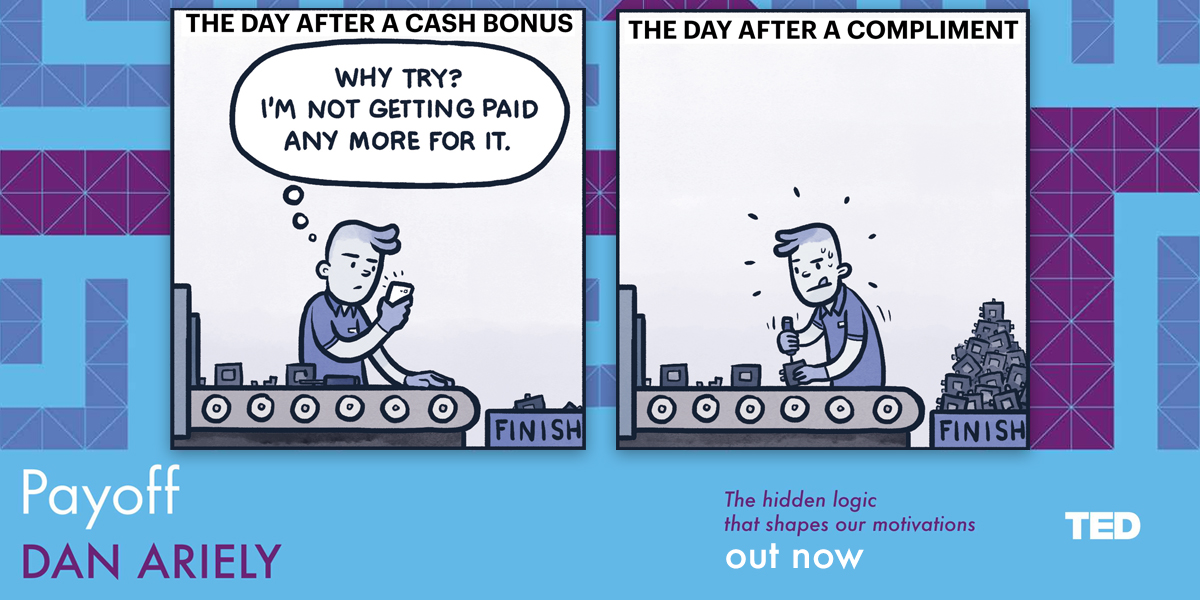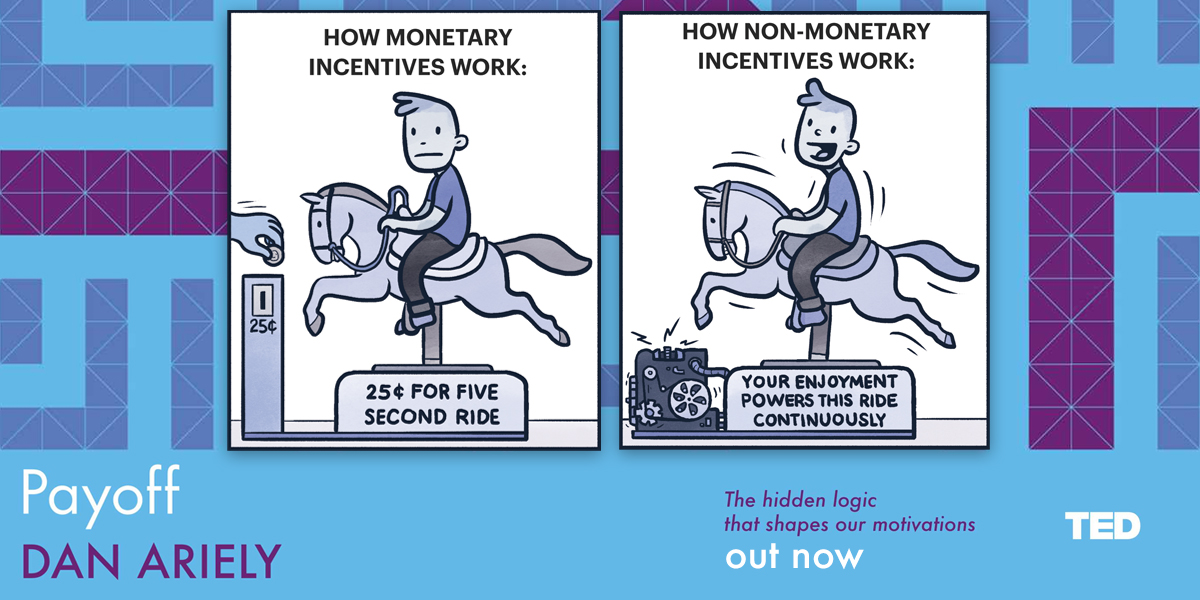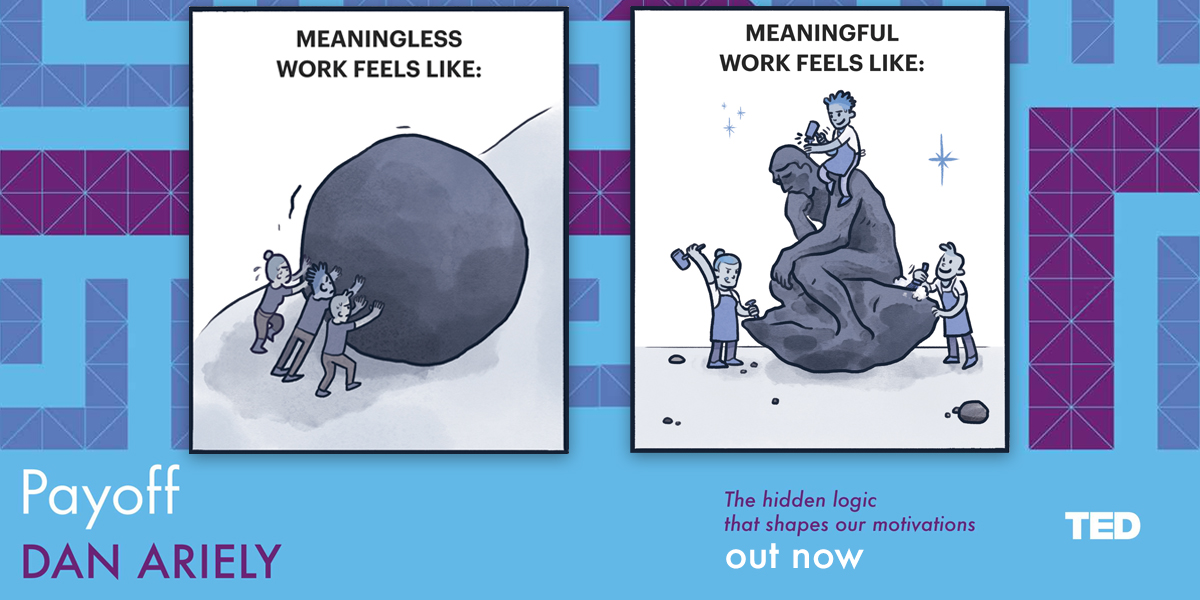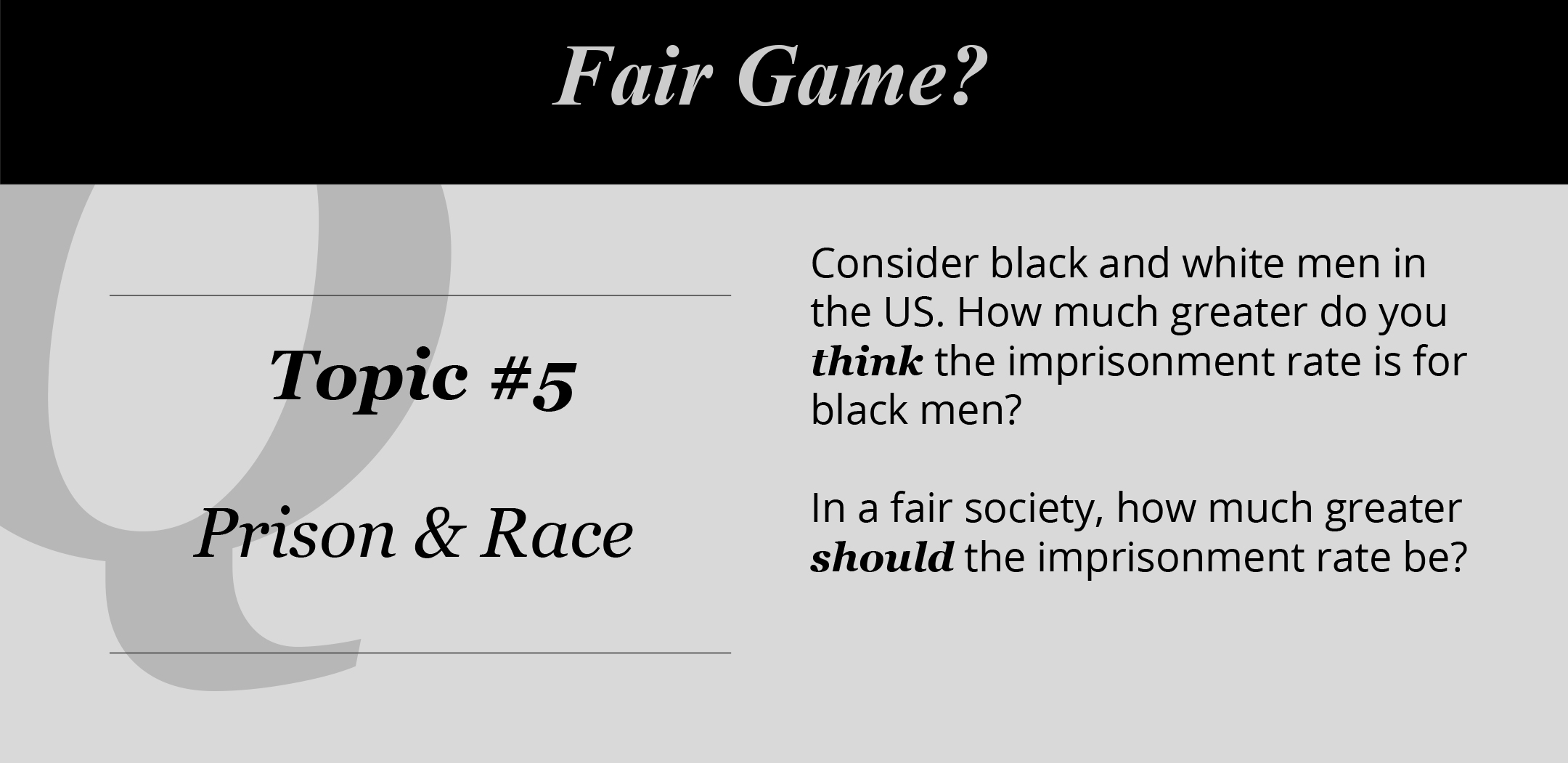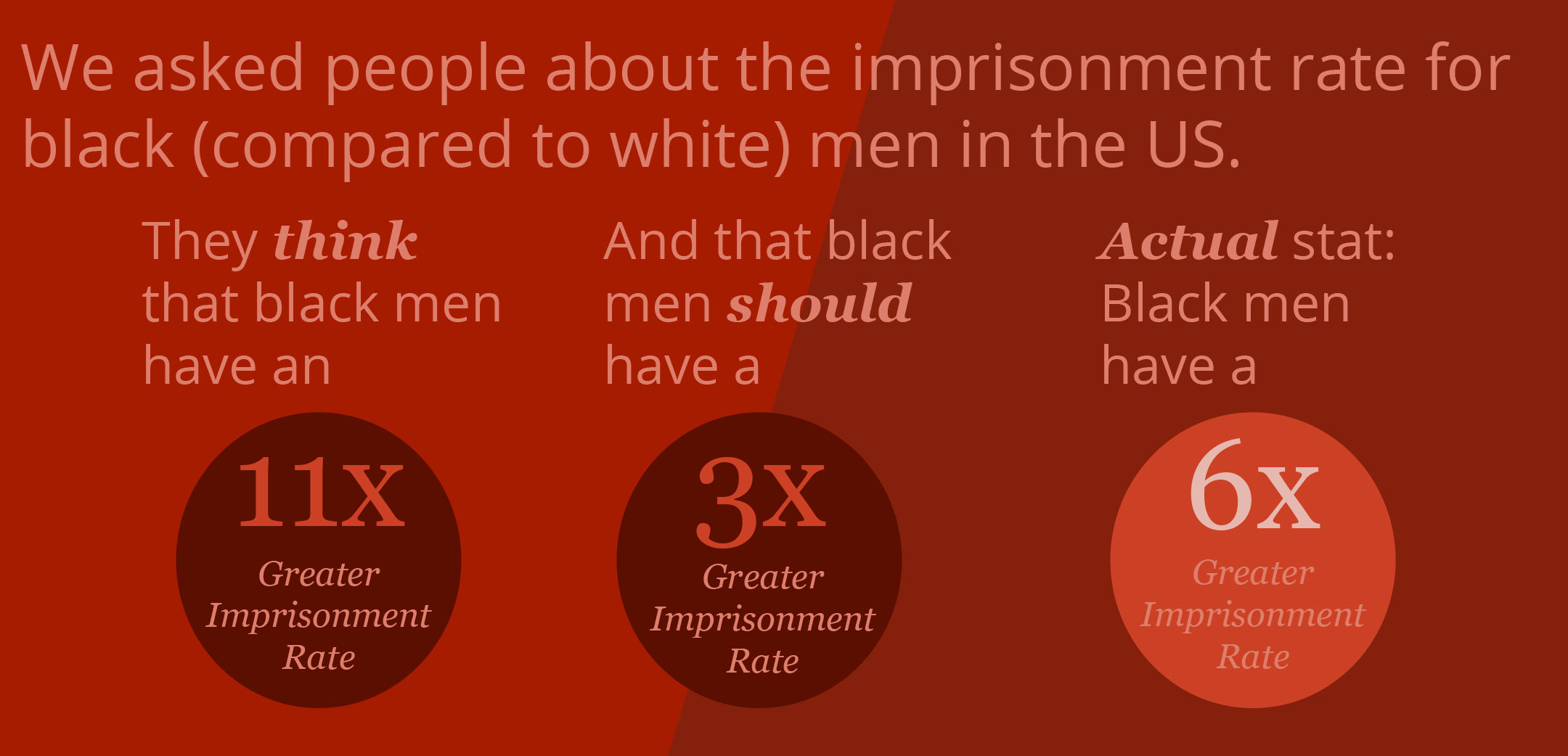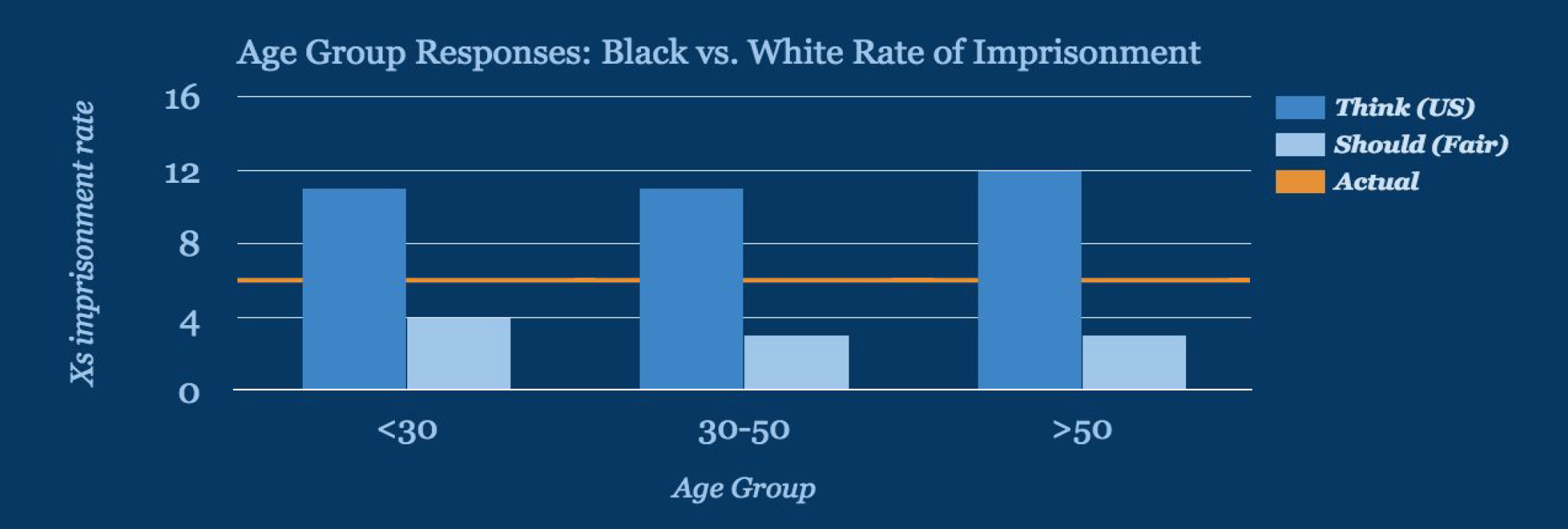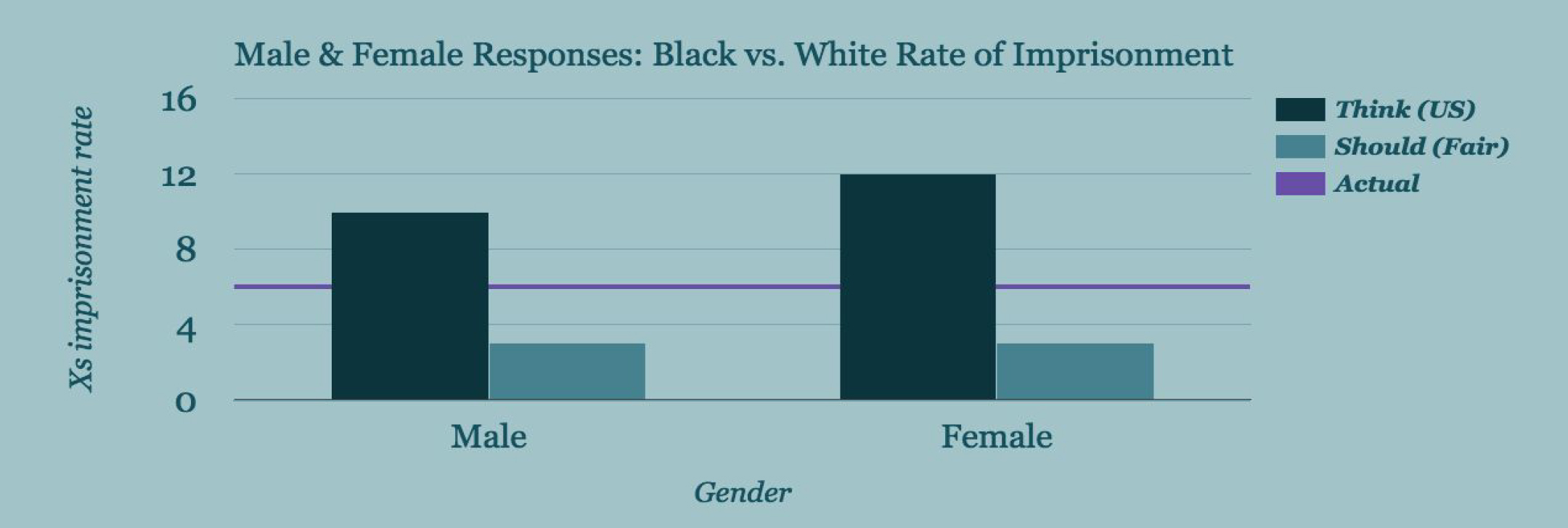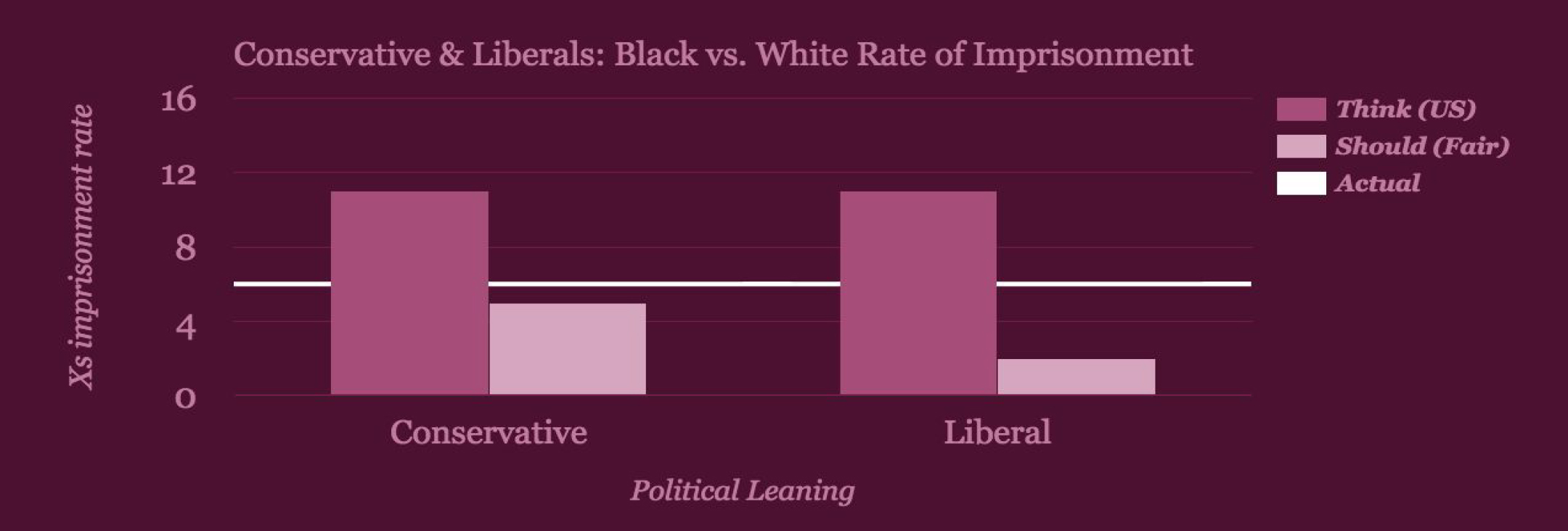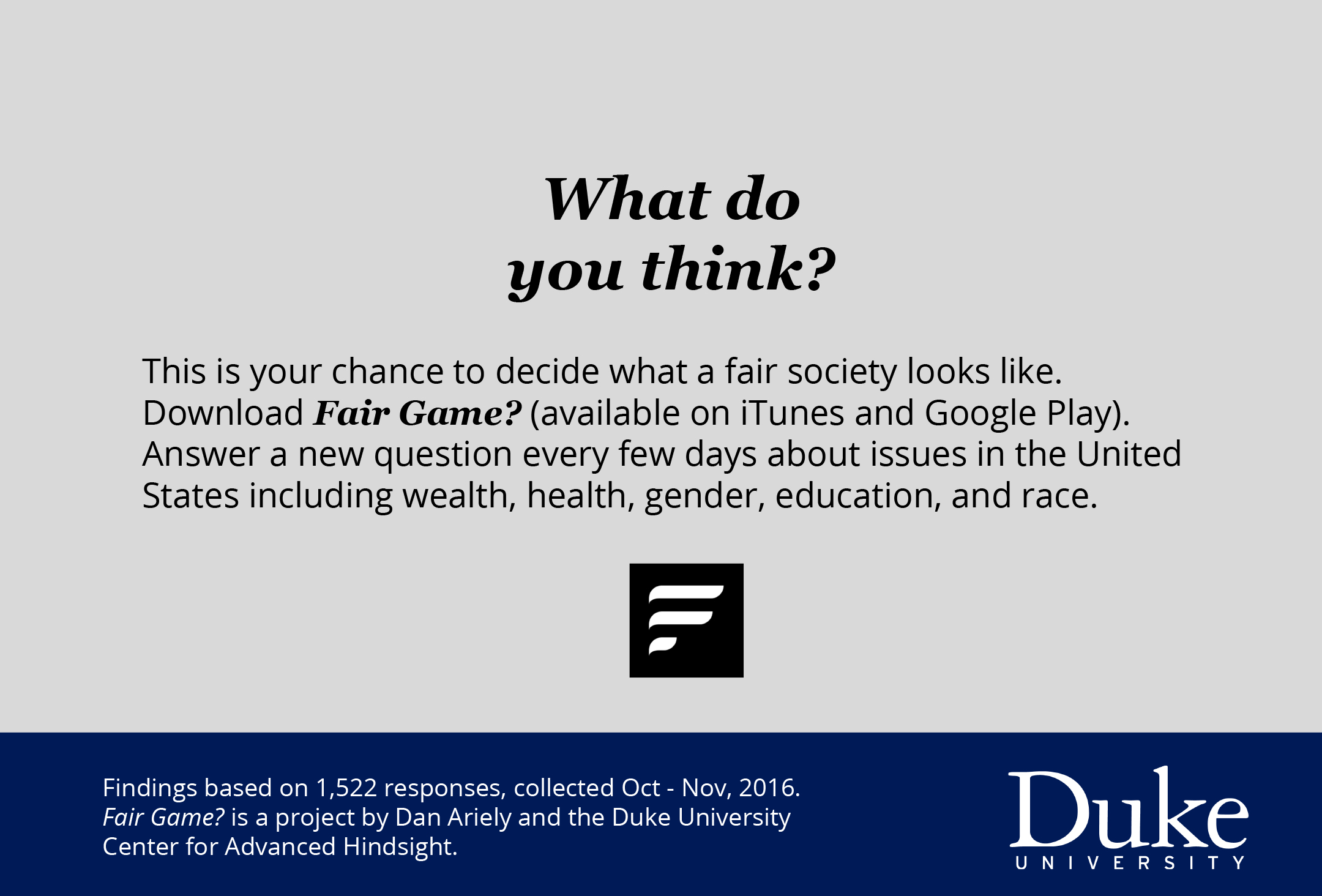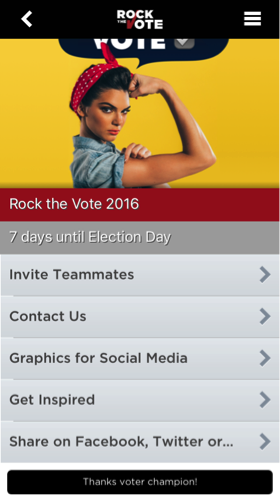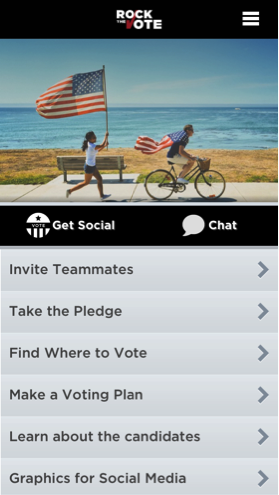Ask Ariely: On Team Tragedy, Airport Anxiety, and Grumpy Gift-wrapping
Here’s my Q&A column from the WSJ this week — and if you have any questions for me, you can tweet them to @danariely with the hashtag #askariely, post a comment on my Ask Ariely Facebook page, or email them to AskAriely@wsj.com.
___________________________________________________
Hi Dan,
I have a hard time watching my favorite football team on TV because I get so upset when they are behind, and when they lose I’m really miserable. Is there a way for me to enjoy the game without taking the result so seriously?
—Brian
One option is to remove the element of surprise by recording the game and having someone tell you the final score before you watch. That way, you will feel less emotionally invested in the outcome and you’ll be able to enjoy the game more for its own sake.
Another approach is to pick a treat that you enjoy—let’s say chocolate—and have some only if your team loses. This would make the loss bittersweet, since you would offset the unhappiness of losing with the pleasure of the chocolate.
Still, as with all kinds of love, loving a team will inevitably bring occasional heartbreak. The best way to deal with it is by learning to appreciate that emotional complexity, with all the good and bad feelings involved.
___________________________________________________
Dear Dan,
My partner thinks it’s better to arrive at the airport hours early to avoid feeling anxious about missing our flight. But I would rather put that time to good use and minimize the hours spent waiting aimlessly at the gate. What’s a good rule of thumb for travel planning?
—Emma
The key here is your partner’s anxiety. If you were simply trying to calculate the most efficient way to use your own time, you would look at how much time you would waste waiting at the airport (discounted by the useful things you can do there, like catching up on email or reading a book) and compare it with how much time you would lose if you missed your flight. Then you could come up with an optimal solution for yourself.
But once you start considering your partner’s feelings of anxiety, you are in the irrational domain of emotions, which are harder to calculate. Try to figure out how severe your significant other’s anxiety is and how long it lasts. If he is highly anxious for, say, 48 hours before the flight, it would be worthwhile to agree to arrive at the airport a few hours early to eliminate his unhappiness. In general, we need to focus not just on how to use our own time efficiently but on what we can do to make our loved ones happy, rational or not.
___________________________________________________
Dear Dan,
I spent half a day wrapping Christmas gifts for my family this year. Is it really worth my time?
—Jessica
Even though it’s time-consuming, wrapping gifts is worthwhile since it makes the recipients enjoy them more, according to a 1992 study published in the Journal of Consumer Psychology. The effect holds even when the wrap is transparent and the recipient can see what’s inside. That’s because wrapping slows down the process of opening the gift, which helps us pay closer attention to the experience. Unwrapping gifts is like the ritual of drinking wine: Swirling it in the glass, looking at it and smelling it all slow things down so that we can focus on the pleasure ahead.
See the original article in the Wall Street Journal here.
The (un-)expected link between the human and the artificial mind
Understanding the human mind is key to the better design of artificial minds.
A short report based on a paper by Darius-Aurel Frank, Polymeros Chrysochou, Panagiotis Mitkidis, and Dan Ariely
Technology around us is becoming smarter. Much smarter. And with this increased smartness come a lot of benefits for individuals and society. Specifically, smarter technology means that we can let technology make better decisions for us and let us enjoy the outcome of good decisions without having to make the effort. All of this sounds amazing – better decisions with less effort. However, one of the challenges is that decisions sometimes include moral tradeoffs and, in these cases, we have to ask ourselves if we are willing to allocate these moral decisions to a non-human system.
One of the clearest cases for such moral decisions involves autonomous vehicles. Autonomous vehicles have to make decisions about what lane to drive in or who to give way at a busy intersection. But they also have to make much more morally complex decisions – such as choosing whether to disregard traffic regulations when asked to rush to the hospital or to select whose safety to prioritize in the event of an inevitable car accident. With these questions in mind it is clear that assigning the ability to make decisions for us is not that easy and that it requires that we have a good model of our own morality, if we want autonomous vehicles to make decisions for us.
This brings us to the main question of this paper: how should we design artificial minds in terms of their underlying ethical principles? What guiding principle should we use for these artificial machines? For example, should the principals guiding these machines be to protect their owners above others? Or should they view all living creatures as equals? Which autonomous vehicles would you like to have and which autonomous vehicles would you like your neighbor to have?
To start examining these kinds of questions, we followed an experimental approach and mapped the decisions of many to uncover the common denominators and potential biases of the human minds. In our experiments, we followed the Moral Machine project and used a variant of the classical trolley dilemma – a thought experiment, in which people are asked to choose between undesirable outcomes under different framing. In our dilemmas, decision-makers were asked to choose who should an autonomous vehicle sacrifice in the case of an inevitable accident: the passengers of the vehicle or pedestrians in the street. The results are published under open-access license and are available for everyone to read for free at: https://www.nature.com/articles/s41598-019-49411-7.
In short, what we find are two biases that influence whether people prefer that the autonomous vehicle sacrifices the pedestrians or the passengers. The first bias is related to the speed with which the moral decision was made. We find that quick, intuitive moral decisions favor killing the passengers – regardless of the specific composition of the dilemma. While in deliberate, thoughtful decisions, people tend to prefer sacrificing the pedestrians more often. The second bias is related to the initial perspective of the person making the judgment. Those who started by caring more about the passengers in the dilemma ended up sacrificing the pedestrians more often, and vice versa. Interestingly overall and across conditions people prefer to save the passengers over the pedestrians.
What we take away from these experiments, and the Moral Machine, is that we have some decisions to make. Do we want our autonomous vehicles to reflect our own morality, biases and all or do we want their moral outlook to be like that of Data from Star Track? And if we want these machines to mimic our own morality, do we want that to be the morality as it is expressed in our immediate gut feelings or the ones that show up after we have considered a moral dilemma for a while?
These questions might seem like academic philosophical debates that almost no one should really care about, but the speed in which autonomous vehicles are approaching suggests that these questions are both important and urgent for designing our joint future with technology.
Email Notifications
How many of our emails should we know about the moment someone decides to email us?
205 billion. That’s the number of emails we sent and received in 2015, and that number is expected to grow to 246 billion by 2019.[1] What does this mean for most of us? A steady stream of new messages coming into our inboxes throughout the day. And for most of us, it seems to be a norm to keep our inboxes open throughout the work day. We focus on the tasks we have at hand, and each “ping” from our inbox draws our attention, even if briefly, before we return back to our work.
The problem here is the high cost of interruption. This cost includes three categories: 1) time cost 2) performance cost 3) stress/ emotional well-being.
Time Cost In terms of time cost, researches have shown that any switching between tasks results in a loss of time. In other words, “multi-tasking” is a misnomer – we aren’t actually doing two tasks at once. We are doing one task, switching to the other, and then switching to the original task. One study showed that after switching tasks, it took an average of 23 minutes and 15 seconds for people to get back to their original task.[2]
Performance Cost It should be no surprise to us that distraction can cause reductions in cognitive performance. In psychological terms, “task-irrelevant thoughts,” that is – thoughts that are unrelated to the task at hand, have indeed been shown to have deleterious effects on performance.[3]
A recent study published in The Journal of Experimental Psychology illustrates how this plays out for cell phones in particular, focusing on the distraction that cell phone notifications can create. In this study, participants were tasked with completing a task involving seeing items and pressing a button every time the item was a digit from 1-9, unless it was the number 3. Some were interrupted with notifications and others were not. The study found that the notification groups were more likely to make errors than the no-interruption group.
Stress/Emotional Well-Being A third factor to consider with interruptions is the effect they have on people’s well being. Task switching is fatiguing for us; it depletes us. One study showed that interruptions resulted in higher feelings of stress, pressure and effort.[4]
At this point, it should be painfully clear to us that we need to be worried about the interruptions-economy. What value interruptions provide, under what conditions, and what are their costs? A little ping may seem innocuous, but there is cumulating evidence that the cost of an interruption is higher than we realize, and of course given the sheer number of interruptions, their combined effect can very quickly become substantial.
If email interruptions can have all these negative effects, what can we do to reduce them? The first thing we should question is this idea that all emails are created equal. Should each email be able to interrupt people? Is the email from someone’s boss as important as the weekly industry newsletter he’s signed up for? What if we designed a different system in which emails were not treated equally?
In a previous study, we looked at how many emails truly are worthy of interruption. We asked people to look at the last 40 emails they received and asked them how soon they really needed to have seen each email. Immediately? At some point today? At some point this week? At some point this month? No need to see it at all?
As it turns out, very few – only 12%! – of emails need to be seen within 5 minutes of being sent.
7% of emails need to be seen within 1 hour, 4% within 4 hours, 17% by the end of the day, 10% by the end of the week, 15% at some point, and a whopping 34% fell into the “no need to see it” category.
With that initial starting point – the idea that very few emails need to be seen right away – we set out to build a tool to allow people create rules for receiving emails. We used a very simple sorting technique: sorting emails based on the sender. In other words, depending on the sender, emails could be set to be received at different intervals. No complex AI or learning mechanisms.
Example of instructions users were given
Example of prompt to set rule by each sender
What did we find? People proceeded to create rules based on senders. Similar to our initial findings, only 23% of emails were set up to be in the “immediate” category. 10% were relegated to the every-4-hours category, 19% to the end of the day, 16% to the end of the week, 5% to some day and a whopping 27% to the “never” category.
We also looked at whether people who received high vs, low quantities of emails behaved differently. While on the whole they had similar behavior, one interesting point of note is that people with 50+ emails/day put highest number of emails into “immediately bucket” (30%) vs. 10-49 emails/day (20%) and <10 emails/day (26%).
Overall, the key point and opportunity we should take away from all of this is that a very simple mechanism can have an impact, creating a significant amount of benefit for people. If you’d like to try this app for improving your email process for yourself, you can download it here.
[1] http://www.radicati.com/wp/wp-content/uploads/2015/02/Email-Statistics-Report-2015-2019-Executive-Summary.pdf
[2] Mark, G., Gudith, D., & Klocke, U. (2008). The cost of interrupted work: More speed and stress. Paper presented at the 107-110. doi:10.1145/1357054.1357072
[3] Smallwood, J., & Schooler, J. W. (2006). The restless mind. Psychological Bulletin, 132, 946–958. http://dx.doi.org/10.1037/0033-2909.132.6.946
[4] Mark, G., Gudith, D., & Klocke, U. (2008). The cost of interrupted work: More speed and stress. Paper presented at the 107-110. doi:10.1145/1357054.1357072
What gives you your #MondayMotivation?
When work can give you that Friday Feeling…
Which of these pictures best reflects your job?
Love, status, money, or morals?
In the Home of the Free, Why Are So Many People in Prison?
The high rate of incarceration in the United States is fraught with social and economic costs. Relatively recent increases in our incarceration rate make us an international outlier and carry a price tag of more than $80 billion annually (more than quadruple the 1980 corrections expenditures). This is despite an overall reduction in crime rates between 1990 and 2012.
In addition to the overall incarceration rate, there is a staggering gap between the incarceration rates of black Americans and white Americans. The gap is most clearly seen between black and white males. Based on 2001 incarceration rates, nearly 1 in 3 (32.2%) black males will will be sentenced to prison during their lifetimes, whereas the rate for white males is 5.9%.
Topic 5 in Fair Game? asked users to think about how much greater the rate of imprisonment is for black versus white men in the US and how much greater it should be in a fair world.
On the whole, our users estimated that black males have an 11x greater imprisonment rate than white males. In reality, recent data shows the imprisonment rate is 6x greater.
How much more greater do people think the imprisonment rate should be in a fair world? 3x more likely.
Estimates for the greater likelihood of imprisonment were remarkably similar across all age groups, as were our users’ beliefs about what would be fair.
What about gender? Males and females differ in their estimates of the greater rate of imprisonment, estimating 10 and 12 times greater likelihoods, respectively. But they agree in what they think a fair rate would be — 3x.
And political leaning? People who identify as conservative and those who identify as liberal estimate the same (11x) greater rate of imprisonment. In terms of how much greater the rate should be in a fair society, conservatives answered 5x more likely and liberals answered 2x more likely. So although their understanding of the world is similar, their notions of fairness, for this topic, are very different.
Together, the data reported here suggest that people overestimate the gap in the incarceration rate by race. And they would reduce the size of the gap that they perceive. There are many factors that contribute to the racial disparity in imprisonment rate. The so-called War on Drugs may be the single largest factor, with Blacks and Hispanics disproportionately representing those in state prisons for drug offenses and sentenced for federal drug trafficking offenses. These offenses often carry harsh mandatory sentences, further exacerbating the disparities. Discrimination has been shown to be a problem at multiple levels of the criminal justice system, including law enforcement, prosecution, sentencing, and reentry to society.
Beyond the pervasive problem of racial discrimination, another consideration is more purely economic– the growth of private companies building and running prisons. Oliver Hart (a 2016 Nobel prize-winner in Economics) and his coauthors have written about private prison contracts and their tendency to induce the wrong incentives by not focusing on outcomes.
There are economic benefits to reducing the prison population, including reduced costs for taxpayers (construction, maintenance and operation of prisons) and of course income and opportunities for those who would otherwise have been imprisoned. Several states have drug decriminalization ballot initiatives in this year’s election and it will be interesting to see whether these have an impact on the rate of imprisonment in those states. What other possibilities might decrease the prison population and reduce the racial disparity in the rate of imprisonment?
Please join us and play along by downloading Fair Game? from iTunes or Google Play.
Rock the Vote 2016!
Thousands of people are currently involved with getting out the vote. They canvas neighborhoods, stand on street corners, write letters, make calls, and donate money to campaigns. But they rarely know if this has an impact. That’s about to change.
We teamed up with Rock the Vote and VoteRockIt to design and build a new app that allows highly engaged voters to make an impact within their personal networks. The Rock the Vote 2016 app amplifies the motivation and energy of get-out-the-vote volunteers by creating direct links from dedicated voters to their more complacent friends.
Here’s where science comes in. Research has found that simply making a plan can be incredibly effective for actual follow-through. Additionally, letting your friends, family, and co-workers know that voting fulfills a social obligation is something that can serve as an important reminder of their civic duty and generate more interest and involvement going forward.
Interested? Great! We’re here to help you channel your efforts into impacting our democracy, one fence-sitter friend at a time. Become a voter champion by inviting friends in your virtual or local networks to join your team; sign the Rock the Vote pledge, find your polling site, look up the candidates on your ballot, and share posts to your larger social media networks. Most importantly, turn your voting enthusiasm into action-based, goal-driven steps for others. Use the app to encourage your complacent friends to commit to voting, to make a concrete plan, and finally, to share that they’ve actually done it. The power is in your hands.
Download Rock the Vote 2016 for Apple or Android and start the chain reaction today. Use Invite Code ‘10000’ to register as a Voter Champion.
The team that created the app includes Dan Ariely, Julie O’Brien PhD, Steven Prince PhD, Stephanie Tepper, and Allison Waters (Center for Advanced Hindsight), Matt Hudson (app developer and founder of VoteRockit), and the civic tech and policy team at Rock the Vote.
 Tweet
Tweet  Like
Like 




